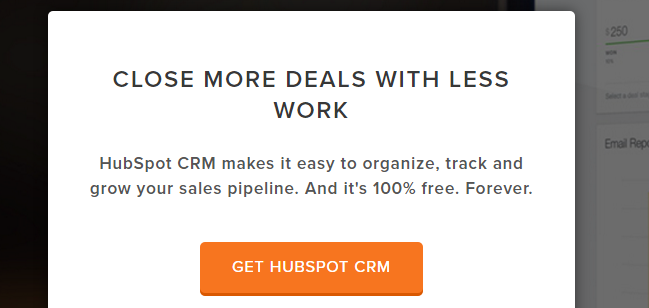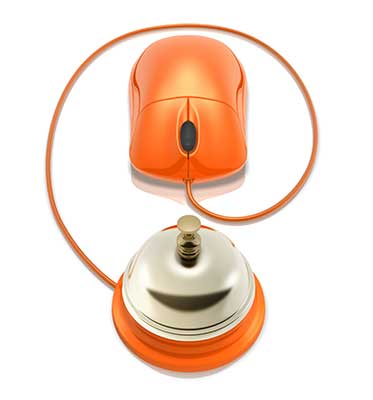
6 Tips To Develop an Awesome Enterprise Software Marketing Strategy
Developing and improving your enterprise software marketing strategy can be frustrating.

When developing a masterful B2B tech company product marketing plan, there are often a lot of cooks in the kitchen involved in the process. Not only do you have questions to answer and requests to fulfill from the C-level, but you also have investors to please, and they can be the toughest crowd of all!
But don’t worry. Many of our clients sell enterprise software, so we wanted to share some top-secret recipes that move the needle up and to the right.
Let’s get started…
1. Focus Your B2B Software Marketing Strategies on the Ultimate Goal: Increasing Monthly Recurring Revenue (MRR)
This metric is the first number investors and executives want to know. You’re probably already very familiar with this term, but as a quick refresher, it means the amount of revenue you generate every month.
Increasing MRR is almost always the underlying goal of a SaaS marketing strategy, even if no one is saying it out loud. We love a concept called “One Big Metric” (OBM). For most SaaS companies, it’s MRR, but it doesn’t have to be.
Essentially, it’s whatever Holy Grail thing you need to accomplish. If you are hitting the OBM, then most, or all, other metrics are probably pacing at or above goal levels.
The reason software companies from Adobe to Zoho have moved to a SaaS model is because a customer’s lifetime value (LTV) is exponentially larger when they are paying a monthly fee — even a nominal one — than it would be paying a one-time fee for a B2B SaaS product.
MRR is the driving force in that equation.
2. Your SaaS Product Marketing Plan Should Outline How To Increase MRR the Smart Way
Most likely, you’re probably looking for some effective tactics to increase MRR. As a B2B SaaS marketing agency, here are a few things we do for our clients to get results:
a) Acquire New Users
This has proven to be the most effective use of time because it generally leads to the most consistent growth of profit.
When it comes to B2B marketing for software companies, here are a few ideas on how you can acquire more customers:
i) Ask yourself where your target customer hangs out and get in front of them with an irresistible offer, or give free expert advice. Hone in on the top thought leadership and/or learning hubs in your area of focus. Think about these places:
- Forums and Blogs
- Social media platforms
- In-person gatherings
- In front of your competitors
- Parallel industry events
- Industry associations
- Google AdWords
ii) Leverage the above channels to reinforce your own communication and messaging wherever possible. Attend the right events and let your prospects know you’ll be there. Secure speaking engagements and get your customers to speak for you.
In fact, the importance of social proof cannot be understated. Almost everybody reads online reviews before buying a product. Selling your software product to other businesses is no different. In fact, the importance of social proof is often positively correlated with the total cost. Your B2B software marketing plan should account for that.
That said, making existing customers raving fans of your brand is always a great help in acquiring new customers.
b) Add New Services
The second way to increase MRR is to add additional products. The best place to start is to think strategically about products that create extra revenue via upsells or add-ons to your core product. Ideally, look for solutions that require the lowest effort to produce.
For example, if you’re an email marketing provider, you could also sell:
- Creative services
- Campaign production services
- Database integrations or connectors
- Products for a parallel industry, like heat map monitoring
c) Improve and Refine Your Differentiation
The third way to increase MRR is to differentiate your company and products from competitors. Refine your unique selling proposition and key differentiators and make them crystal clear to your prospects.
Here are some ideas to help accomplish this:
- Specialize in servicing only a specific customer type (like “software sales teams”)
- Showcase years of experience in a specific industry (like “healthcare B2B SaaS” or “financial services”)
- Use a “voice” and style in your branded communication and that feels more personable rather than corporate
- Develop helpful features (customers will always tell you what they’d benefit from)
- Be more convenient: be easier and faster to use, learn, deliver, and/or set up
- Deliver the best customer service in the business
- Critically evaluate your pricing (either more affordable or more expensive but with premium features)
Answer the question “What is our value proposition?” It should be clear enough to be understood in a couple of sentences.
For example, Hubspot’s SaaS marketing strategy is to position themselves as having “a highly customizable CRM that’s easy to use.” The differentiators are clear, concise and to-the-point:

3. Don’t Forget Customer Retention in Your B2B SaaS Marketing Plan
When you’re marketing B2B software, absolutely don’t forget retention because even a small difference in how long a customer stays can mean a lot more money in the bank.
Plus, improving customer retention rate drives that MRR snowball that B2B SaaS companies love (and need) so much.
How to Calculate Retention Rate
Retention rate tells you the percentage of your customers (or revenue) that you keep every month. It’s a good benchmark to see how many customers you’re losing.
It’s calculated by this formula:
(total for that month – amount lost for that month) / (total for that month) * 100%
Here are two examples:
- ($1,900,000 – $190,000) / ($1,900,000) * 100% = 90% retention rate.
- (10 customers total this month – 2 customers lost this month) / (10 customers total this month) * 100% = 80% retention rate.
You may have already known how to calculate retention rate. Some companies look at this religiously and some don’t look at all. Spice up your plan by including the current rate as a benchmark and add a goal for where you’d like to be in a year. Bonus Tip: Outline the tactics it will take you to get there.
Churn Rate
Churn rate is the opposite of retention. It’s the percentage of customers who discontinue your services at a given time. Just make sure you’re aware of this term and always look to decrease it.
4. Tactics are Half the Battle in a Marketing Plan for a SaaS Company
Okay, so you know how important retention is. But what are the best ways to improve it?
a) Collect Feedback from Customers to Improve Your Product
Listen to your customer’s complaints and suggestions to find out what really matters and iterate accordingly.
With a better product, you can delight your customers, which makes them want to stay longer.
[Side Note] Figuring out your B2B software marketing strategy is tough, to say the least, but aligning your development, marketing, sales and customer teams is critical to improving your product which, in turn, feeds retention.Consider creating an internal advisory board of sorts. Gather members in the trenches from each department that can go back and share needed info with relevant teams. This way, those teams can exchange intel from their respective areas, and inform overall enterprise software strategy and roadmap moving forward.
b) Reinforce the sale and value of your product
One of the most overlooked (but effective) ways to improve retention is to reinforce the sale.
“What does ‘reinforce the sale’ mean?” you say.
It means constantly reminding the customer how valuable your product is and keeping an open line of communication.
One way of doing this is to set up a marketing automation campaign. You can bring value to such a campaign by:
- Showing case studies of customers successfully using the product in new or innovative ways
- Reminding customers of the return on investment that your product generates
- Letting customers know if there are additional features they could be using (install an analytics package if you don’t already have one to help you get this data)
- Previewing new features current customers can look forward to in future
- Showing customers what they can do in order to better achieve their goals
- Giving customers relevant and current industry news
Note: this shouldn’t be about spamming your customers with content they don’t find valuable. It’s about providing the right amount of useful information.
c) Have Support Ready To Over Deliver
Without support, your customers could be needlessly frustrated or confused.
If you’re selling enterprise software, have an account manager available to guide and help new customers during an initial onboarding period — usually the first 3-6 months. Those sales are usually high-priced and hard to close so, it’s important to position new customers for long-term success and help turn them into raving fans 🙂

Remember: you’re selling an entire experience, not just a product. If the service is below average — or even just average — it reflects badly on your reputation.
5. Borrow Some Consumer Advice for Your B2B SaaS Company Marketing Plan
Let’s compare the differences between selling software to consumers versus selling to other businesses. This may help you find more effective B2C and B2B marketing tactics.
B2C
B2C SaaS software companies usually:
- Are well-funded with high budgets
- Are more commoditized
- Are competitive based on the shorter consumer attention span
- Have free trials or “freemium” business models
- Have higher churn
- Have lower prices
Therefore, a B2C SaaS could:
- Focus more on differentiation since most competitors basically look alike.
- Focus more on retention since reducing churn has a potentially large positive impact on the bottom line.
B2B
B2B SaaS software companies usually:
- Are less likely to offer free trials and freemium models (sometimes to great detriment; often because the product is considered “too complex”)
- Have an industry-specific product
- Have lower churn due to the difficulty of implementing a new solution
- Have higher prices
- Have substantially longer sales cycles
Therefore, a B2B SaaS company could leverage these differences by:
- Make the product as easy to use as possible and have an account manager for each new customer to retain them longer and increase their perceived value.
- Focus on customer acquisition by adding new services that greatly extend the usefulness of the core product.
- Test a freemium model or some variation thereof. It could help you stand out and get more customers in the door.
6. Research Your Customers
Understanding your customers’ hopes, fears, and dreams is pivotal for creating a successful marketing plan. However, the emphasis on learning more about your customer sometimes fades when other priorities creep up.
Since the marketing team doesn’t always communicate often with the product development or innovation departments, the emphasis gets shifted towards creating content based on their ideas and assumptions. These assumptions about what the prospect cares about could be wrong.

Without understanding your customer, your content can fail to get the level of engagement you want because it doesn’t align with what the customer cares about. Something as simple as a one-hour meeting with a happy customer can unlock many stories, ideas, pain points, and selling angles that can improve your marketing results.
Those insights will fuel better marketing response, engagement, click-through rates, and sales. Other parts of your company may even already have this customer information due to their customer research initiatives, so sometimes, all you have to do is make sure there’s excellent interdepartmental collaboration.
Conclusion
In summary, there are clear steps anyone can take to improve the B2B SaaS marketing plan template.
How to market B2B software can be boiled down to a few essential steps. You can increase your monthly recurring revenue by:
- Selling additional products
- Adding new customers by finding out where your ideal customers hang out and getting in front of them
- Standing out with your brand and product positioning
To improve your retention, it’s all about:
- Having an open channel of communication between you and your customer
- Reinforcing the sale with marketing automation
- Improving your product based on feedback
By leveraging these SaaS marketing tactics, you can skyrocket the success of your B2B SaaS marketing strategy framework and increase the responsiveness of your leads.
More Ideas from Top B2B SaaS Marketing Plan Templates
View all posts filed under “ROI”
Back to the main blog overview
Return to WebMechanix.com homepage
Now, we want to hear from you in the comments.
What’s the biggest obstacle you’re facing with marketing your product? Is your budget not large enough? Are you not able to produce a positive return? Let us know.
Most newsletters suck...
So while we technically have to call this a daily newsletter so people know what it is, it's anything but.
You won't find any 'industry standards' or 'guru best practices' here - only the real stuff that actually moves the needle.






